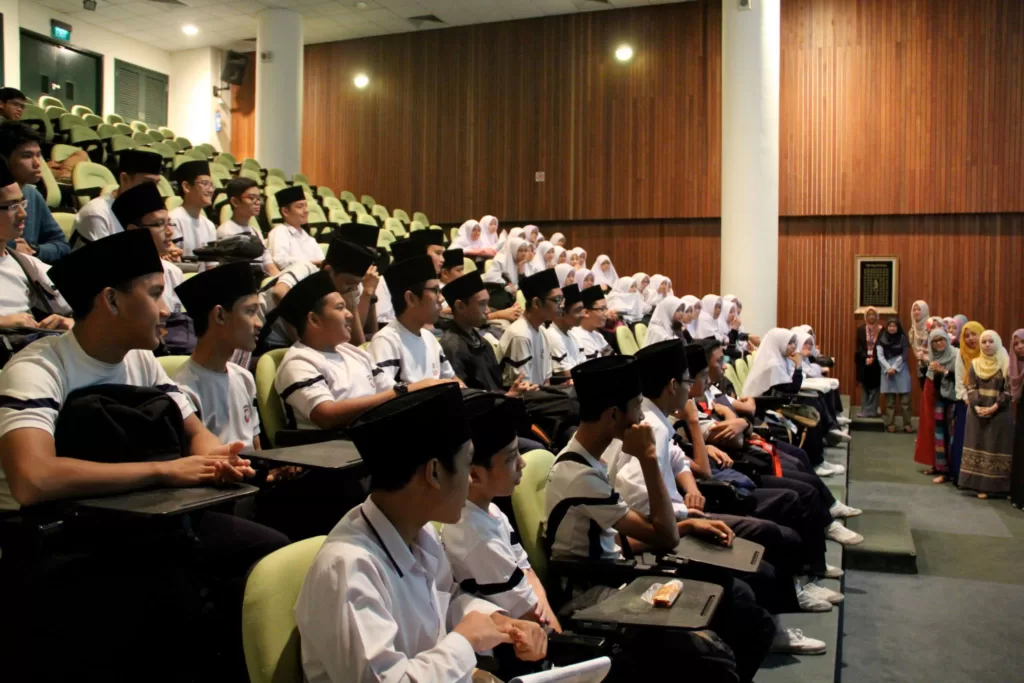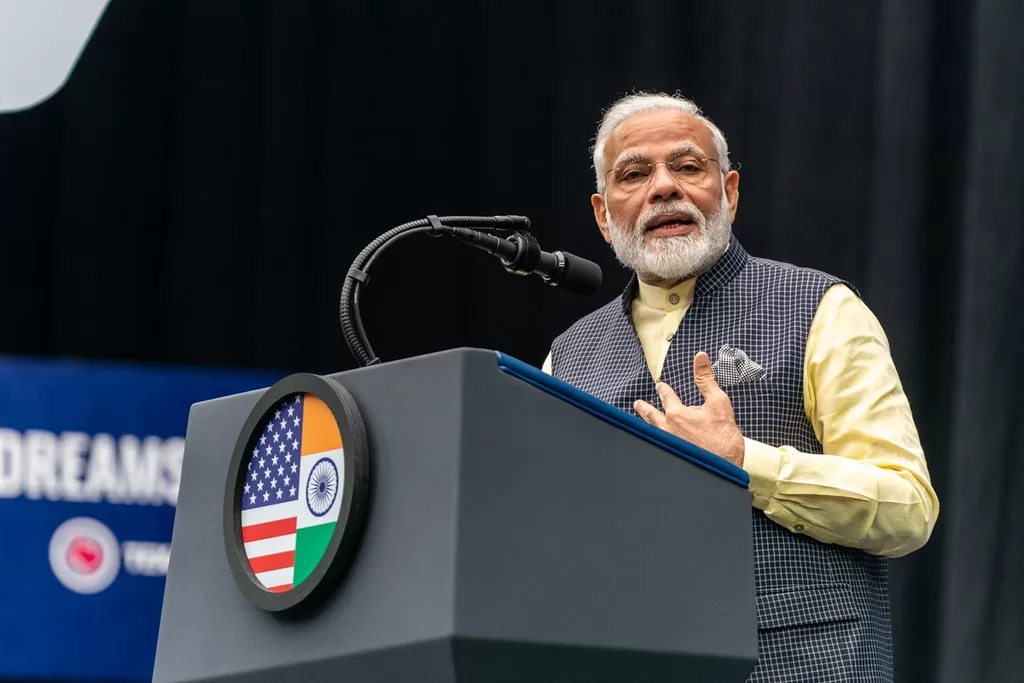India's middle class has been the big winner from a deregulated economy. In turn, that middle class helps fuel the rise of populism and Hindu nationalism.
 Indian Prime Minister Narendra Modi’s party, the ruling Bharatiya Janata Party, has been accused of deploying a devastating misinformation app. (Hernan Nersesian, G20, Flickr) : Hernan Nersesian, G20 CC BY 2.0
Indian Prime Minister Narendra Modi’s party, the ruling Bharatiya Janata Party, has been accused of deploying a devastating misinformation app. (Hernan Nersesian, G20, Flickr) : Hernan Nersesian, G20 CC BY 2.0
India’s middle class has been the big winner from a deregulated economy. In turn, that middle class helps fuel the rise of populism and Hindu nationalism.
India is undergoing seismic political and cultural changes as Hindu nationalism, fuelled by the rise of neoliberal economic ideas, radically restructures the country.
As ‘Hindutva’, or ‘Hinduness’, dominates public life, neoliberal themes of market and trade deregulation and privatisation to reduce the role of the state in the economy are being applied.
While these changes benefit new elites and a growing middle class, they hit the working class.
To understand the changes in India under Prime Minister Narendra Modi, it is necessary to recognise the essential characteristics of the ‘Gujarat model’ of development, which he has held as one to be emulated by the rest of the country.
As chief minister of the state of Gujarat from 2001 to 2014, Modi oversaw an administration that sparked rapid economic growth.
The model is based on the old Gujarati tradition of collaboration between the state and the corporate sector, the maintenance of low wages to increase profit, the provision of tax holidays to induce investment and the acquisition of private land to be alloted to industry at a massive subsidy.
All this is done to the exclusion of social spending, winning the endorsement of the elite — the new middle class and dominant upper castes.
These latent “Gujarati values” have now become the primary ingredients of the magic formula for establishing a muscular Indian nation-state.
India started its post-colonial journey as a constitutionally secular nation with the goal of building itself into a liberal democracy.
The necessary institutions required for establishing a liberal democracy were duly established and nurtured, despite occasional aberrations and hiccups.However, India now seems to be turning to the right, just as many other powerful countries have done in the 21st century.
This rightward shift in India was aided by two inextricably linked transformations: an illiberal turn in Indian democracy and the rapid movement towards a neoliberal economic system.
This has happened while India has retained most of the formal representative institutions of democracy.
Neoliberalism became the dominant public discourse globally and India too moved to open up its economy in the early 1990s.
This had two major consequences for Indian society.
First, under the spell of the neoliberal economy, almost all economic activities became subject to the market, to be assessed primarily in terms of money.
Temporary and market-based contracts displaced permanent arrangements in the economic, professional, cultural and political spheres.
Second, the neoliberal economy spelt utter disaster for the organised working class. In the formerly unionised or semi-unionised organised industrial sectors, workers were gradually disempowered by measures like the closure of industrial units or the expanded right to hire and fire through contractualisation of employment.
Before the Indian economy opened up in the 1990s, there was discernible, although not consistent, movement towards creating a welfare state.
While the trade unions were strong in the public sector such as the railways, the banking sector and the insurance sector, especially after their nationalisation , the overwhelming majority of the workforce was employed in the unorganised sector like the construction industry. Not unionised and unprotected by laws as in the organised sector, it was unable to negotiate effectively with the employers.
Today, even in the regulated organised sector, the employees — especially in the emerging information technology and the communications sector — are unable to unionise for the fear of losing their jobs.
In the emerging gig economy, the scope for forming unions is bleak, as most of the employees are casual or contractual workers. One of the results of the liberalisation of the economy was the expansion of the middle class in metropolitan cities where quality education and better-paid jobs in service sectors were more easily available.
This class, riding on the wave of neoliberalisation of the economy, has found in militant religious nationalism a new self-esteem.
The neoliberal economy, in effect, created more space for the politics of the Hindu Right.
Modi’s ruling Bharatiya Janata Party, primarily selling this ideology, has been effective in manufacturing consent through its cultivation of the emerging middle class.
That middle class appreciates the pleasure of ownership of private property, gated communities and values of individualism above all else.
The new middle class and the echo chambers of the powers-that-be equally relish the close contacts and connections between the government and the captains of industry and finance.
The government frequently turns to these ‘captains’ for advice, and delivers them favours by undervaluing state assets set for privatisation. State subsidisation of capitalists and its active acceptance by the middle class has become the new norm.
These developments have been accompanied by a growing judicialisation of administration. This implies a strong preference for governance by decree, executive fiat or by judicial decisions instead of democratic, participatory, deliberative and legislative decision-making.
Only a few years ago, the critical issues of policy-making were mostly being deliberated upon on the floor of the national and state legislatures.
The government now seems to prefer to tweak the legislative process, almost keeping the opposition in the dark.
Examples include overhauling the Indian Police Act or the Code of Criminal Procedure of the colonial era by placing the bills without duly itemising the agenda of the national legislature, or taking vital policy decisions when the Parliament is not in session.
The state and the new middle class look up more and more to the judiciary for remedy of any ‘‘aberration’’ in the administration, while the access to judiciary remains only nominally egalitarian and extremely expensive.
Businesses collaborate intimately with state actors and also have acquired a strong role in formulating legislation.
This nexus brooks no criticism, so the regulatory framework favours corporations, rules are changed mid-game which favour certain corporations and new forms of digital surveillance and policing of citizens multiply.
All of this undermining of traditional practices and institutions makes homogenous Hindu nationalism a dominant theme in India.
And that comes at the cost of basic rights for religious and ethnic minorities and denies the country’s multiple histories and multiple geographies.
Sabyasachi Basu Ray Chaudhury is Professor of Political Science at Rabindra Bharati University, Kolkata, India.
Originally published under Creative Commons by 360info™.












